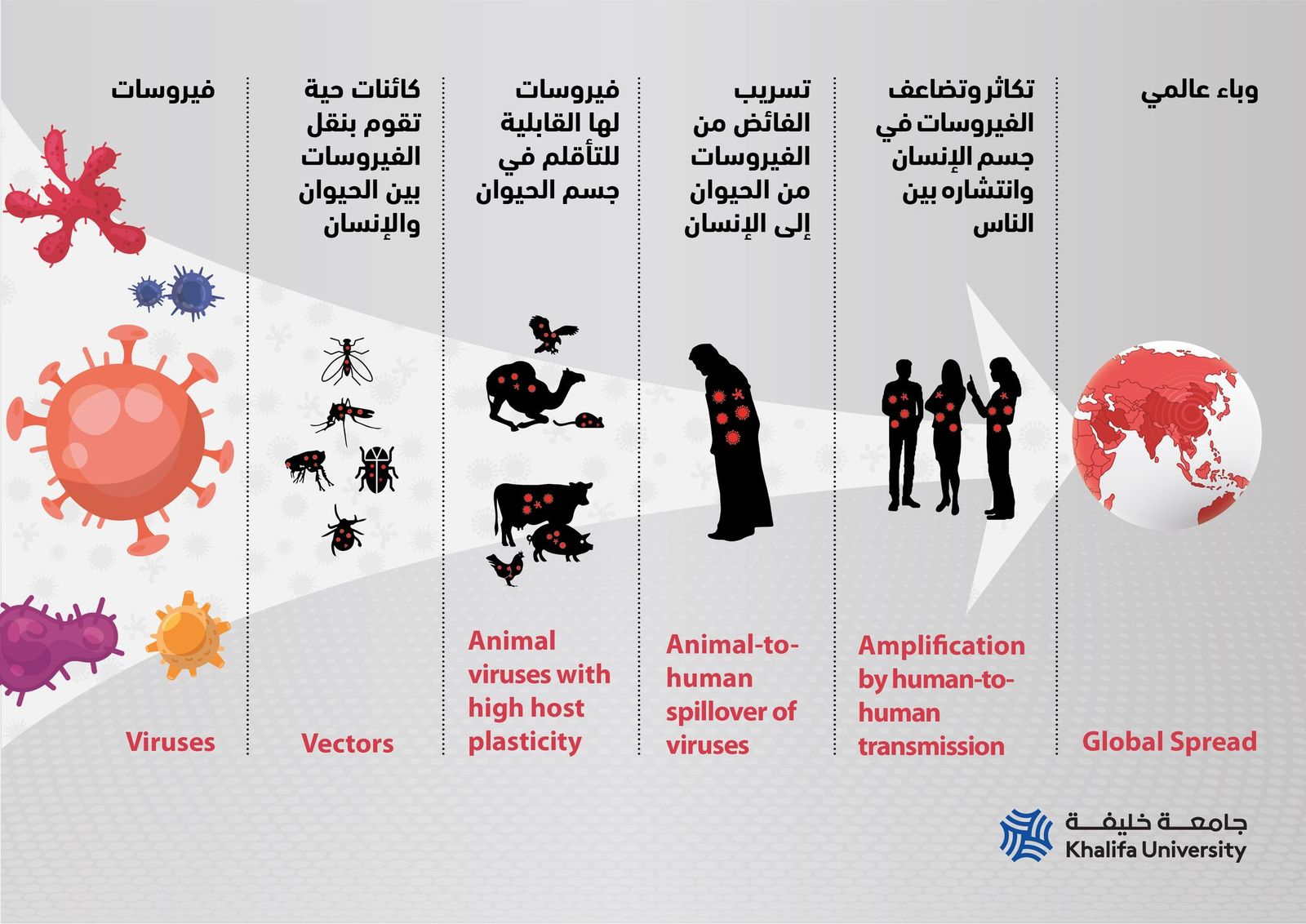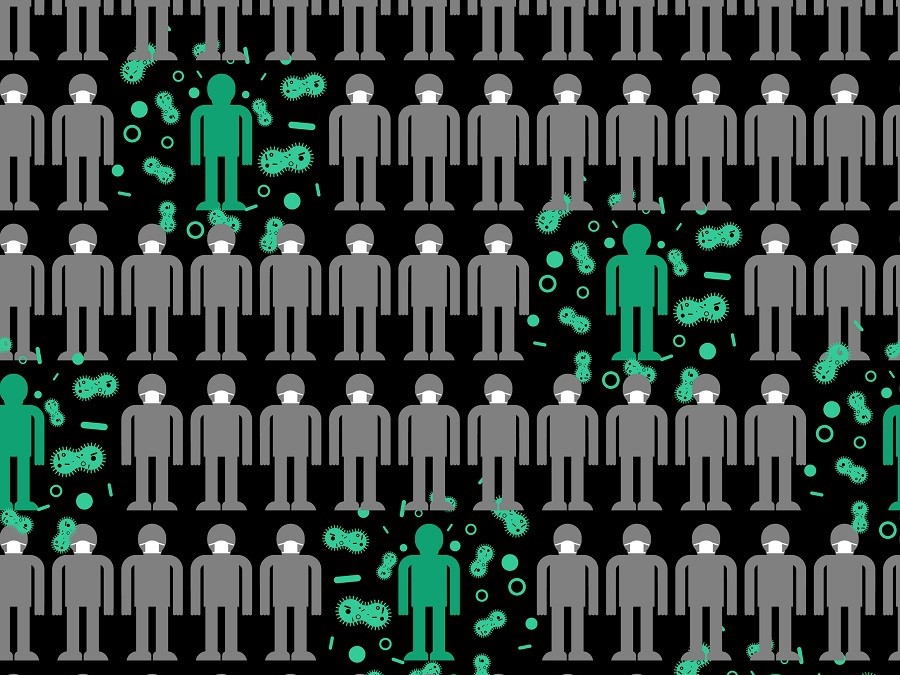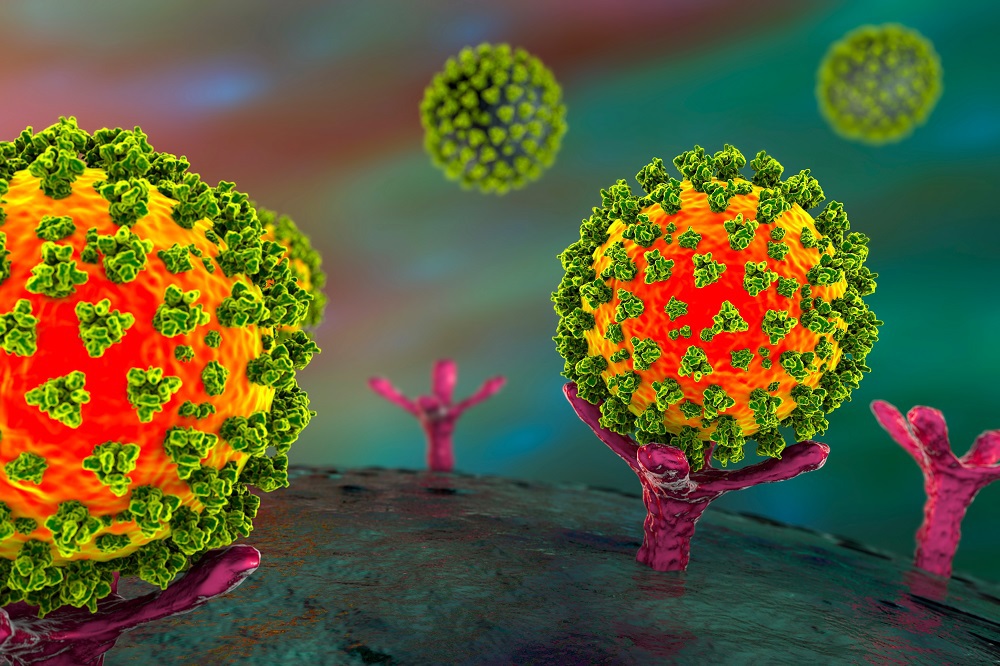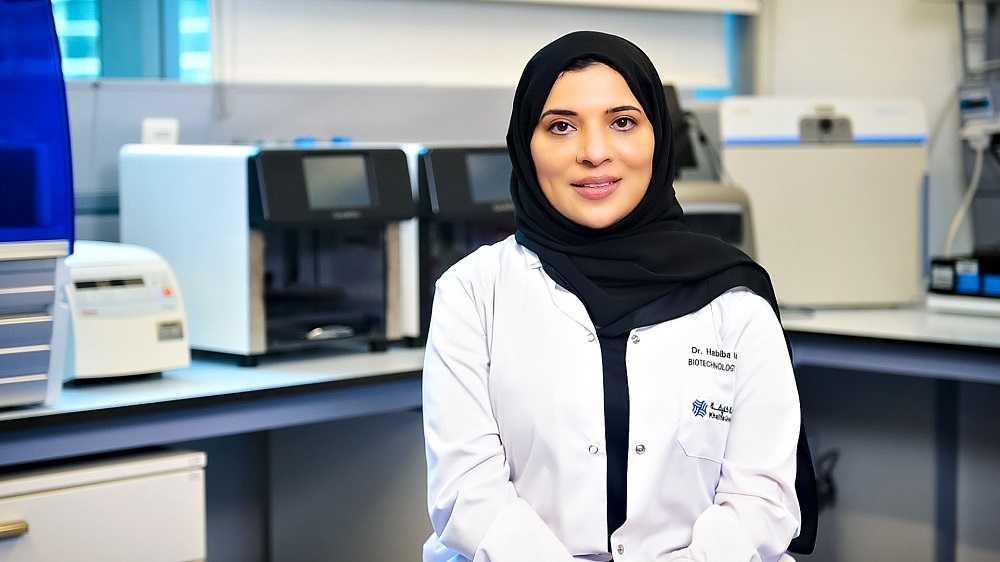
Led by Khalifa University, Project Will Help Understand What Mammals Have in Common that Facilitate Virus to Enter the Host
Khalifa University of Science and Technology today announced it is leading a team of researchers to work with universities across the globe to investigate how the COVID-19 virus, usually found in animals such as bats, has made the jump to humans.
This research falls under Khalifa University’s ‘COVID-19 Research and Development Task Force’ initiative, which includes multidisciplinary researchers from across the world including from the UAE, the US, China, Singapore and Australia. Collaborators from across the Middle East, North America, Europe, South East and North East Asia, as well as Australia will collect animal samples for the study.
According to Dr. Habiba Alsafar, Director of the Center for Biotechnology (BTC) at Khalifa University and the Principal Investigator of the project, the current COVID-19 outbreak is an example of zoonosis, which refers to diseases that can be transmitted to humans from animals. The disease is caused by a coronavirus (CoV) that is believed to have originated in bats and transmitted to humans. There have been two major coronavirus outbreaks in recent history – the 2002 epidemic that was caused by the SARS-CoV, and the 2012 MERS-CoV outbreak. All three coronaviruses share a common entry point into the cells of humans and other animals, through a receptor known as ACE2, with the assistance of another protein known as TMPRSS2.
Dr. Alsafar, added: “These are what the virus sees on the surface of the cell and understanding their similarity across different animals will provide clues on how the virus is transmitted. Other international groups including researchers from other countries have already expressed interest in joining the effort on studying the human and viral elements of the disease. We cannot beat the virus without cooperation as it knows no geographical boundaries.”
Originally conceived by Khalifa University faculty members, the project titled ‘The identification of conserved groves in the host cell receptors that bind and facilitate coronavirus (CoV) entry into mammalian cells’, is already under way. Leading the project will help understand what mammals have in common; from the point of view of cellular receptors that allow or facilitate the virus to enter the host.
Dr. Steve Griffiths, Senior Vice-President, Research and Development, Khalifa University, said “The project to identify the cause of COVID-19 transmission from animals to humans showcases our commitment to collectively find a solution to this global healthcare threat. Coming under the framework of Khalifa University’s COVID-19 Research and Development Task Force, this cross-border collaboration brings together the required expertise from renowned academic institutions to directly address scientific uncertainties that surround COVID-19. We believe this research project will provide answers regarding the transmission of coronavirus between humans and animals e while also providing insights that may help limit the transmission of COVID-19.”
Dr. Alsafar leads a multidisciplinary team from Khalifa University which includes Dr. Wael Osman, Assistant Professor, Chemistry, Dr. Samuel Feng, Assistant Professor, Mathematics, and Dr. Herbert Jelinek, Associate Professor, Biomedical Engineering. The project collaborators include Dr. Khaled Amiri, Al Ain University, and Dr. Khaled Hazzouri, UAE University. To date, international collaborators include researchers from the University of Florida, Chinese Academy of Agricultural Science, Murdoch University in Australia and Singapore, as well as the University of Western Australia.
The team members have expertise in medicine, molecular genetics, bioinformatics, veterinary science, and epidemiology, which will be relevant to this project. These skills will be essential as the study will encompass epidemiology, comparative genome science, protein modelling and simulation to identify the traits that mammals share that allow the virus to transfer from one species to another.
The molecular techniques and analytical tools for the comparative study of mammals are already well established at Khalifa University, which is pursuing related research on multiple fronts. The comparative analysis of ACE2 and TMPRSS2 genes from animals from around the globe is another example of the university’s multidisciplinary approach to problem solving.
Clarence Michael
News Writer
17 July 2020






